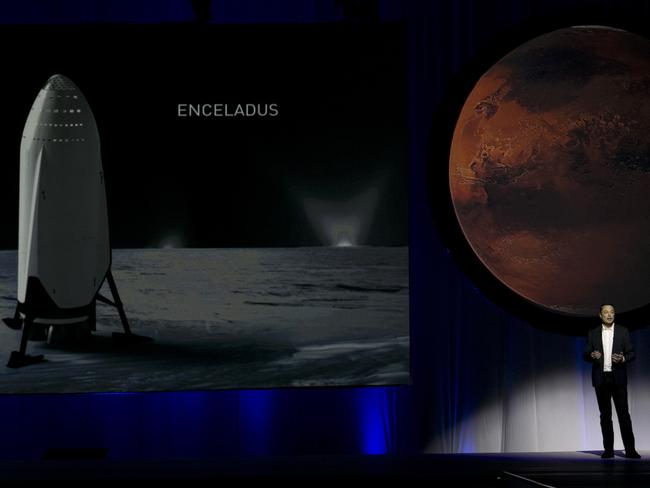Elon Musk finally outlines his plan to get us to Mars
THE founder of SpaceX Elon Musk has finally unveiled his plan to establish a self-sustaining city on Mars — but it won’t be easy.
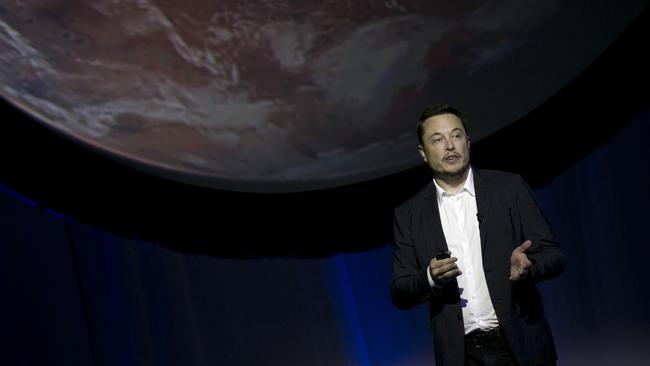
WHEN the world needs a plan for the future, there’s arguably no better person to turn to than Elon Musk.
The SpaceX and Tesla CEO took the stage at the International Astronautical Congress Wednesday morning AEST to deliver a long-awaited speech outlining his thoughts and plans on humankind’s next frontier: the colonisation of Mars.
The billionaire entrepreneur wasted little time on stage and immediately began speaking about how he wanted to make it seem like moving to Mars was “possible, to make it seem as though it’s something that we can do in our lifetimes,” he said.
“That anyone can go if they wanted to, that’s the really the important thing.”
There was, of course, one small caveat that Musk later mentioned — you must be willing to die.
The man who has been so influential in shaping the future said there is two fundamental paths for humanity to go down. Humans can stay on Earth forever, eventually succumbing to some sort of extinction event (“I don’t have an immediate doomsday prophecy but eventually history suggests there will be some doomsday event”) or we start heading out into the universe and become an multi-planet species.
“I hope you’d agree that this is the right way to go,” he said, imploring the crowd to cheer in agreement.
The big question for Musk is not only how to get us to Mars but how to create a “self sustaining city” on the harsh rocky planet. He said he wants to create a colony that’s “not really an outpost but a planet in its own right.”
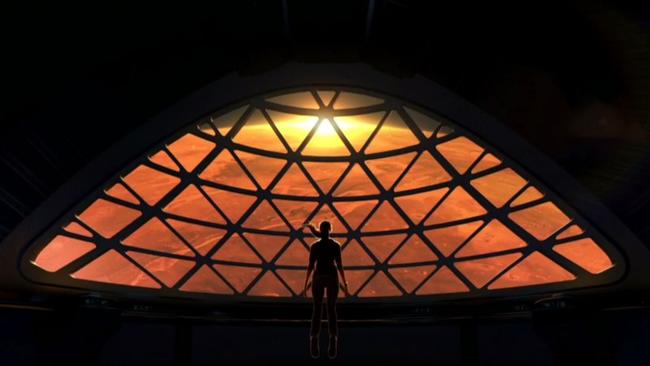
People running in to get good seats for the @elonmusk show! #IAC2016 #SpaceX pic.twitter.com/cg76ghTmnJ
— Remco Timmermans (@timmermansr) September 27, 2016
The price of admission won’t come cheap as Musk pointed out the exercise will be “very dangerous” — a notion that was underscored by the recent explosion of an unmanned SpaceX Falcon 9 rocket during a test in Florida.
“Are you prepared to die? If that’s okay, then you’re a candidate for going,” Musk said. “The risk of fatality will be high. There’s just no way around it.”
Sure it’s important to acknowledge the inherent dangers but Musk was more keen to talk about his plan to get us there (and keep us there) in one piece.
“This is less about who goes there first ... the thing that really matters is making a self-sustaining civilisation on Mars as fast as possible. This is different than Apollo. This is really about minimising existential risk and having a tremendous sense of adventure,” he said.
THE PLAN FOR A CITY ON MARS
During the address Musk showed a futuristic video depicting his concept of an interplanetary transport system based on re-usable rockets, a propellant farm on Mars and 1000 spaceships in orbit, carrying about 100 people each.
Millions of tons of cargo would need to blast off aboard a powerful rocket, which he described as a “scaled-up version of the Falcon 9 booster,” the company’s current rocket system that can land vertically.
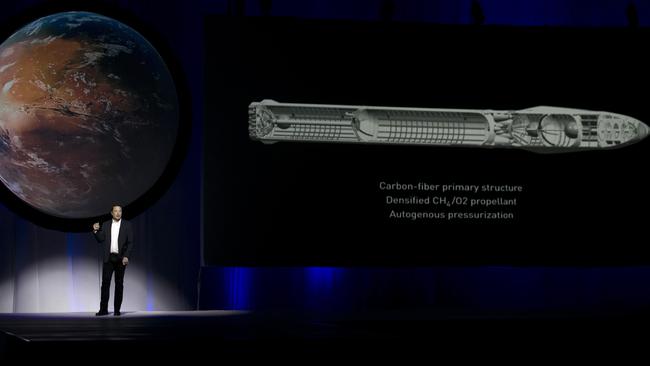
The plan is to take a spaceship into orbit, release it and land back on Earth to pick up a fuel tanker which it will immediately returned to the spacecraft for refuelling purposes.
These fleets of crew-carrying capsules would remain in Earth’s orbit until the two planets’ alignment brings them closer together which happens about every 26 months. Once the rocket has refuelled it will head to Mars and deploy large solar panels to use the sun’s immense solar energy to help get there — a tactic NASA used earlier this year with the launch of Juno into Jupiter’s orbit.
And those being shuttled into the cosmos wouldn’t exactly be slumming it according to the Silicon Valley titan. The spacecraft will have a restaurant, cabins, zero-gravity games and movies on board.
The video Musk played during the presentation depicting the Interplanetary Transport System can be watched below.
SpaceX also plans to send an unmanned Dragon cargo capsule to Mars as early as 2018, paving the way for a human mission that would leave Earth in 2024 and arrive the following year.
Once on Mars, humans would have to install a plant to produce propellant by using the planet’s methane resources to fuel the spacecraft for its return to Earth.
The expedition is going to require huge amounts of private sector funding no doubt. The first flight would be expensive but the aim is “making this affordable to almost anyone who wants to go,” by dropping the price of a ticket over time to $US100,000 ($A130,000),” Musk said.
According to NASA’s director of Advanced Exploration Systems Division, Jason Crusan, the trip to Mars currently takes about a year. However in the plan Musk put forth, he said the journey will take just 80 days. That’s in part because the SpaceX fleet will be 3.5 times more powerful than NASA’s Saturn V — the biggest rocket built to date — which carried the Apollo missions to the moon.
Experts are sceptical about Musk’s optimistic time frame for putting people on Mars and the financial cost of doing so.
“Bottom line is the cost. You’re talking of tens of billions of dollars and SpaceX doesn’t have that type of money,” said John Logsdon, the former director of the Space Policy Institute at George Washington University who expressed doubt over the time frame of the ambitious plan, the AFP news agency reported.
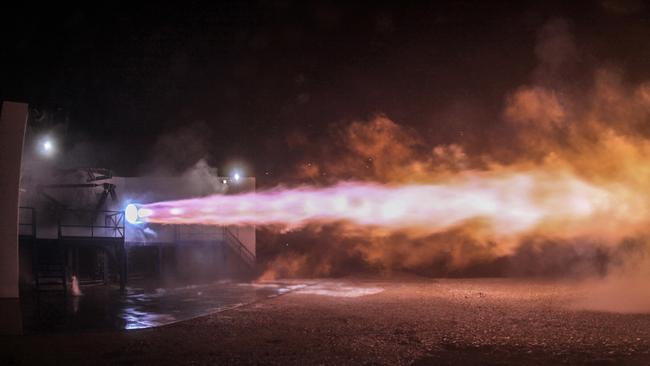
Retired astronaut Leroy Chiao showed a little more faith in the PayPal co-founder saying Musk had “amassed technical and operational experts, and SpaceX is generating revenue from satellite launches.”
“Elon Musk sets aggressive goals, and while he doesn’t always make the exact date, he is usually able to make those goals. I would say that it is possible, but aggressive,” he said.
Elon Musk is nothing if not incredibly ambitious when it comes to his future-driving projects. And if this particular plan is to become a reality, he believes there could be a million humans living on Mars by the year 2060.
Time is on our side, but clearly we’re all going to need a little bit of luck as well.
-With AFP
